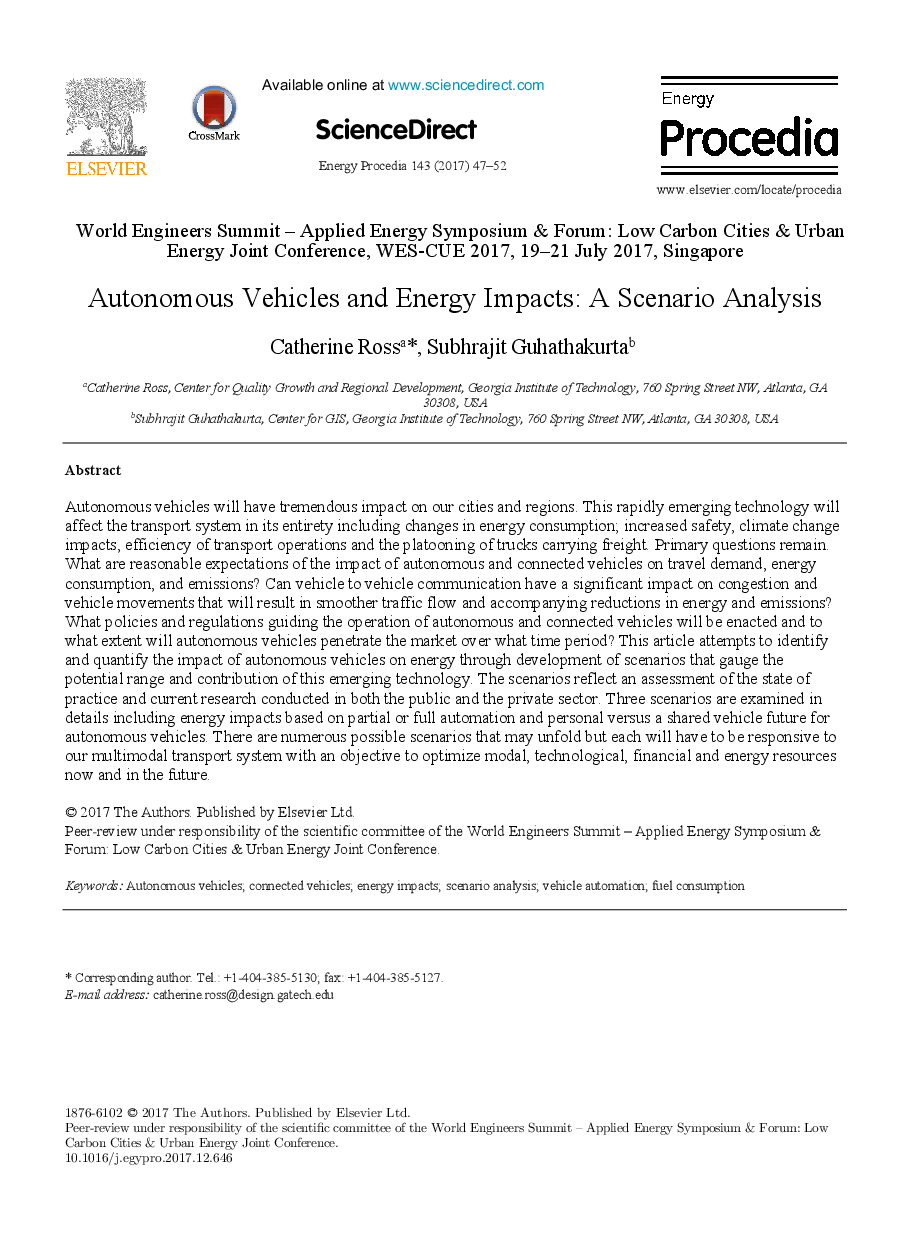ترجمه فارسی عنوان مقاله
وسایل نقلیه مستقل و تاثیرات انرژی: تحلیل سناریوی
عنوان انگلیسی
Autonomous Vehicles and Energy Impacts: A Scenario Analysis
| کد مقاله | سال انتشار | تعداد صفحات مقاله انگلیسی |
|---|---|---|
| 94847 | 2017 | 6 صفحه PDF |
منبع

Publisher : Elsevier - Science Direct (الزویر - ساینس دایرکت)
Journal : Energy Procedia, Volume 143, December 2017, Pages 47-52
ترجمه کلمات کلیدی
وسایل نقلیه مستقل، وسایل نقلیه متصل، تاثیرات انرژی، تجزیه و تحلیل سناریو، اتوماسیون خودرو، مصرف سوخت،
کلمات کلیدی انگلیسی
Autonomous vehicles; connected vehicles; energy impacts; scenario analysis; vehicle automation; fuel consumption;
ترجمه چکیده
وسایل نقلیه مستقل تاثیر زیادی بر شهرها و مناطق ما خواهد داشت. این فناوری به سرعت در حال ظهور سیستم حمل و نقل در کل خود را شامل تغییر در مصرف انرژی خواهد شد؛ افزایش ایمنی، تاثیرات تغییرات آب و هوایی، بازده عملیات حمل و نقل و غارت کامیون های حمل و نقل. سوالات اصلی باقی می ماند انتظارات معقولی از تاثیر وسایل نقلیه مستقل و متصل به تقاضای سفر، مصرف انرژی و انتشار گازهای گلخانه ای چیست؟ آیا وسیله نقلیه به ارتباطات وسیله نقلیه تاثیر قابل توجهی بر تراکم و حرکات وسیله نقلیه دارد که سبب جریان صحیح ترافیک و کاهش انرژی و انتشار آن خواهد شد؟ کدام سیاست ها و مقررات هدایت عملیات وسایل نقلیه مستقل و متصل به تصویب خواهد رسید و تا چه حد خودروهای خودمختار به چه میزان در بازار نفوذ می کنند؟ در این مقاله تلاش می شود تا تأثیر وسایل نقلیه خودمختار بر انرژی را از طریق توسعه سناریوهایی که میزان بالقوه و سهم این تکنولوژی در حال ظهور را تعیین می کنند، شناسایی و اندازه گیری کنند. این سناریوها، ارزیابی وضعیت عمل و تحقیقات فعلی در بخش دولتی و خصوصی را نشان می دهد. سه سناریو به طور دقیق مورد بررسی قرار می گیرند از جمله تاثیرات انرژی بر اساس خودکار سازی جزئی یا کامل و شخصی در مقابل آینده خودروی وسیع برای وسایل نقلیه مستقل. چندین سناریو ممکن است وجود داشته باشد، اما هرکدام باید به سیستم حمل ونقل چند منظوره ما پاسخ دهند و هدف آنها بهینه سازی منابع مدرن، تکنولوژیکی، مالی و انرژی در حال حاضر و در آینده باشد.

